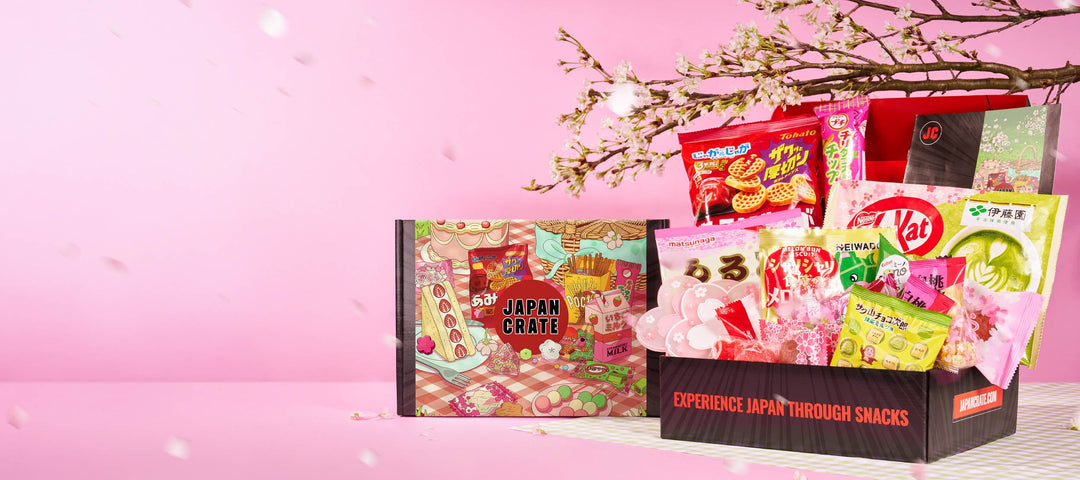How to Order Ramen in Japan?
It is a must to sample the many foods that Japan has to offer when visiting. But for us foreigners, what is the first cuisine that comes to mind? Ramen, that's for sure, is right! There are innumerable varieties and regional delicacies of the popular Japanese dish ramen to try, and more than 32,000 ramen restaurants can be found in Japan, many of which are crowded and have long lineups outside the doors. The delicacy known as "ramen," which is a wheat noodle soup, was created centuries ago in China and has since become the nation's unofficial national dish.
Given how well-known it is both in Japan and internationally, who wouldn't want to try some of these mouthwatering bowls of ramen straight from Japan? Well, if you plan to. Here is a thorough explanation of how to order ramen, a list of tips for a delectable noodle experience, and a handy guide on eating ramen noodles like a pro in Japan.
What is Ramen?

Ramen is a particular kind of noodle prepared with wheat flour, salt, water, and kansui, an alkaline substance made of potassium carbonate and sodium carbonate that gives the noodles their elasticity. Ramen is also the name of a dish made with those noodles that are typically served with hot soup and toppings. Many ingredients are used to make ramen noodles, which can vary in thickness and consistency as well as in straightness or curliness. Ramen is often divided into three flavors based on the broth's flavor: shoyu ramen (soy sauce), shio ramen (salt), and miso ramen. Then tonkotsu broth, or pork bone broth, refers to the broth's base element or pork bones rather than its flavor. Contemporary ramen cooks, however, break from these categories to make soups spiked with everything as ramen has grown over the past 30 years.
Ramen Culture in Japan

Since the Japanese embraced the ramen meal throughout the years and developed an entire culture around it, ramen is today acknowledged as Japanese cuisine, despite having Chinese cuisine origins and previously going by the name Shina soba (Chinese noodle dishes). There is something for everyone to like in this dish, whether it be the light, creative styles or the large, opulent servings. Of course, each of the many varieties of ramen has its own traditions and regulations. With a bowl of noodles, sliced pork, and veggies served in a scalding hot broth as a national favorite, ramen has been elevated to exquisite cuisine in Japan. Also, there are many types of ramen, depending on where they come from and how they are made. Indeed, the rich cultural significance of ramen complements its excellent flavor as a satisfying dinner in Japanese cuisine.
How to eat Ramen in Japan?
If there's one thing you learn about the Japanese as a people, it's that they are extraordinarily dedicated, modest, serious, and driven by honor. These traits can also be seen when eating Ramen noodles. Even though it may appear to be "simply a noodle," every Japanese knows there is a rule of conduct. Here are some of the steps you need to know to enjoy the best ramen in Japan:
1. Savor the soup!

You should think of the soup broth as being an essential part of each satisfying bowl of ramen. First, take a massive mouthful of soup. That delicious soup must be enjoyed by you alone. You don't even need to use the provided spoon; you can simply slurp soup straight from the bowl. Although you will be given chopsticks for your noodles and a spoon for the soup, you are quite permitted and even encouraged to lift the bowl to your lips and sip from it. Both slurping and silence are not regarded as impolite. Both are in good condition. Although it's not required, it can be seen as a nod to the cook if you consume the full bowl. Remember, ramen is served hot, so be careful!
2. Only Add Condiments after Tasting the Soup

There are some ramen varieties that encourage the use of condiments. This includes the soy sauce in Abura Soba and the ground sesame seeds in Hakata ramen (Tonkotsu). But, we advise eating the soup on its own. It is considered impolite to immediately begin seasoning the ramen with the extra sauces, ramen toppings, and spices you'll find on the table before even tasting it. Slurping the noodles plain is the finest representation of the cook and the ramen itself. Always keep in mind that once you add condiments, there is no going back. Thus, it's best to add anything at the very end if you want to.
3. Eat Right Away

There is no waiting or hanging out to chat. As your bowl is served, you start eating because you came to eat. Ramen tastes best when it's served hot like it is in Japan! Once you've eaten some of the ingredients on their own, combine everything and continue to slurp the soup as you stir it in or eat it with a spoon. Use your chopsticks to split the soft-boiled eggs in half if you ordered one, or simply bite into it. You can combine it with the soup and serve it with some noodles.
However, remember that ramen soup doesn't taste the same when it's warm. It partially loses its spirit and makes the noodle soggy. Another reason is that there isn't much room for moving and frequently long lines outside Ramen-ya or Ramen shops, so you need to keep things going. Thus, you need to eat immediately then after finishing, you stand up and go.
How to Order Ramen in Japan?
In general, there are two types of ramen shops in Japan: traditional restaurants, where you place your order with a waiter or waitress, and establishments that employ a ticketing system where you order from a vending machine and bring your ticket to the counter. That said, it can be intimidating for new customers to buy in-store because there are so many ramen variations and components to take into account. Worry no more! Here are some tips to help you order the best ramen in Japan.
1. Select a Ramen Style

As you might expect, there are numerous varieties of ramen available in Japan. Every ramen business has a signature dish. Shoyu ramen should be your choice if that is the ramen restaurant's specialty. Yet there are numerous varieties of ramen broth, all of which come from and are well-known in other regions of Japan. Here are some of the ramen styles you can order.
-
Shoyu Ramen
-
Shio Ramen
-
Tonkotsu Ramen
-
Miso Ramen
-
Niboshi Ramen
-
Kitakata ramen
-
Tsukemen
-
Abura Soba
2. Choose the noodle you want

There are numerous forms and lengths of ramen. It could be wrinkled, straight, thick, thin, or even ribbon-like. Noodles for ramen were traditionally produced by hand, but as the dish has become more popular, many ramen shops now choose to employ machines to boost production and enhance quality. Typically, three alternatives will be presented to you: firm (katame), regular (futsu), or loose (yawarakame). Several locations provide a variety of noodle selections that range in thickness from hosomen (thin/light) to chijiremen (medium/springy) to futomen noodles (thick/fat). After they receive an order, they boil the noodles so they may adjust the cooking time to control the hardness. Because of this, you must make sure the ramen chef is aware of the firmness you prefer for your noodles.
3. Choose your preferred toppings.

The last touches to your ramen dish are the toppings, sauces, and sides. Typically, toppings and sides are ordered at the counter, though the restaurant may offer toppings if your first vending machine choice is one of the more elaborate ramen meals. Also, when you order ramen, it will come with a few included toppings. But you may add more toppings for a fee if you'd like to.
Often, gyoza (Japanese dumplings) and rice are served as sides. Sometimes, rice comes as a bonus. Once you've picked up your order, you can add condiments at no extra charge. These comprise pickles, soy sauce, chile oil, vinegar, ginger, miso, and garlic.
Ordering Ramen using Vending Machine

This food ticket system or vending machine system is a standard method of ordering meals at ramen restaurants around Japan. Japanese people are accustomed to this quick and simple method of ordering food, but newcomers frequently get lost because everything is written in the native tongue. However, the effectiveness of the vending machine system is expanding its adoption, and although appearing complicated, it is actually extremely simple. These devices resemble enormous coffee vending machines and are usually placed right next to the store's entrance. Some of the most current versions have touch panels and English-language settings. The majority of restaurants, however, make it simple for customers even if they don't understand Japanese by posting clear images next to each dish.
In ticket vending machines, there are touch panels or buttons. The older style is the button type, which has one button per dish. They are most frequently discovered at individually owned ramen shops or retro restaurants with set menus. Ticket machines also offer a large assortment of toppings, including boiled egg, bean sprouts, bamboo shoots, roasted pork or braised pork, pork belly, fermented bean paste, and Japanese dumplings, below the main menu.
Moreover, the same procedure can be used to order sides. After making your choice, the food ticket (or tickets) will be dropped into the tray. Once you've successfully acquired a ticket, turn toward the seating area and hand it to the waitstaff or chef. In some stores, a staff member will approach you when you use the machine. All you have to do is sit back and wait for your ramen to arrive after you've passed on your order. Sitting at the counter will frequently allow you to watch the chef make it in front of you! Japanese chefs will be able to prepare you a mouthwatering dish based on your preferences when you make your selections, pay the bill, and present your ticket at the counter.
Ordering Ramen using Menu

There are still many ramen-ya in Japan where you place your order verbally rather than using a ticket machine, such as long-established businesses and ramen shops located in rural areas outside of Tokyo or Osaka. There are numerous menus that are written vertically and sometimes horizontally written. The rightmost side of a vertically written menu is often where the suggested ramen styles and standard menus are located. Because Japanese is written vertically, you always read from right to left when you read it.
Additionally, most suggested dishes and basic menus have been placed toward the top of a horizontally printed menu because that is where your eyes would naturally go. That said, it's easy to place an order; you only have to choose what you want and let the staff member know. While payment is frequently made after your meal, there are some stores where money is occasionally made upfront.
It's Japan Crate Time!
The best and most authentic Japanese sweet and savory snacks are available at Japan Crate for a very reasonable price. We at Japan Crate make it simple for each and every consumer to purchase goodies from Japan. The snacks you order online won't take long to be delivered right to your home.
You'll appreciate the selection of delectable flavors of Japanese snacks that Japan Crate offers. Have the best box of Japanese treats delivered to your home each month! The flavor of Japanese goodies from Japan Crate will surely bring a delectable experience to your life. You can also satisfy cravings for authentic Japanese noodles each month with options from Sugoi Mart’s noodle collection, which has a wide array of instant noodles. Get the taste of Japan right to your door with Japan Crate!
Author Bio







Leave a comment